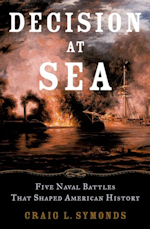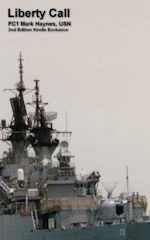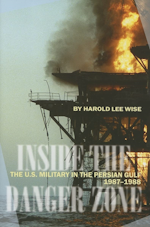Origins Of The IS Joshan P225
The La Combattante II fast attack craft originated from a collaboration between Germany and France. Iran commissioned a fleet of 12 ships of this class, referred to domestically as the Kaman class. Nine of these were delivered between 1977 and 1978, while the remaining three were delayed until 1981 due to the 1979 Islamic Revolution.
The Joshan was sunk by the USS Simpson during Operation Praying Mantis in 1988. It is important not to confuse this ship with the new Joshan, which was named in honor of the original. Iran has developed a significantly enhanced version of this class known as the Sina class. By 2012, Iran had constructed four Sina-class vessels and was in the process of building five more

These ships typically had a displacement of 234 tons, measured 47 meters (154 feet 2 inches) in length, and were generally armed with a 76 mm (3 in) gun forward, four Exocet missiles in box launchers midship, and a 40 mm (1.6 in) gun aft, though the specific armament could vary based on the operator’s needs.

La Combattante II fast attack craf
The IS Joshan P225 in Operation Praying Mantis
The USS Wainwright and two frigates attacked the Sirri and Sassan oil platforms. Rear Admiral Less, stationed in Bahrain aboard the command ship Coronado (AGF-11), maintained constant communication with the three SAG commanders. At 1130, he instructed Captain James Chandler on the Wainwright to locate and identify an approaching Iranian vessel near Sirri. Shortly after, at 1145, Wainwright’s sensors detected the electronic emissions of an Mk-92 fire-control system, indicating a modern warship. Chandler directed a helicopter from the Bagley to identify the approaching craft.
Eleven minutes later, after dodging small-arms fire from Iranian Boghammers (small, fast, armed patrol boats), the helicopter confirmed the contact as the Iranian attack boat IS Joshan, a ten-year-old, 154-foot French-made Kaman patrol boat. As the IS Joshan drew closer, Chandler reviewed detailed intelligence on the vessel, including a photo of her commanding officer, Lieutenant Commander Abbas Mallek. The IS Joshan, equipped with Harpoon surface-to-surface missiles, was already within firing range. This critical information was relayed to Less, who swiftly decided that this might be their only opportunity to sink an Iranian ship that day. He ordered Chandler: “Don’t let that ship get past you. Take that ship.” Earlier directives had instructed all commanders to “be as humanitarian as possible,” so Less told Chandler to warn the Joshan before engaging.
At 1200, Chandler issued the first of four similarly worded warnings over channel 16 to the Joshan: “This is a warning. Stop, and abandon ship. I intend to sink you. Over.” The Joshan immediately responded, claiming no hostile intent, but continued its fast approach. Tension mounted among the crews of the three ships in SAG Charlie, prepared for either an attack or defense. U.S. fire-control radar locked on, missiles were ready to launch, and sailors stood ready to act, awaiting the next move.
The Wainwright continued to issue warnings, totaling four in all. Choosing not to shoot first nearly proved fatal for the Americans. At 1213, events accelerated. The Joshan, just 13 nautical miles away, activated its Mk-92 fire-control system, now actively seeking a target. At 1215, the Joshan fired a Harpoon missile. The Bagley’s helicopter crew saw the white smoke of the missile launch as it sped towards the Wainwright.
In the Wainwright’s CIC, excited voices reported the missile launch. The Wainwright deployed chaff, activated electronic countermeasures, and began evasive maneuvers. Chandler ordered all non-essential personnel to take cover and quickly radioed the Simpson, authorizing her to fire.
The Simpson launched an SM-1MR Standard missile from its Mark-13 launcher. Although typically used for anti-aircraft purposes, this missile was adapted for surface-to-surface combat. It flew towards the Joshan. For a brief moment, both ships had missiles in the air.
Lookouts on the Wainwright saw and heard the incoming Harpoon missile. Something, perhaps the chaff cloud or electronic countermeasures, confused the missile’s guidance, causing it to miss the Wainwright by about 100 feet and crash into the sea.
The Joshan was less fortunate. Despite deploying chaff, the Simpson’s missile struck the Iranian ship. The Wainwright’s CIC crew, relieved by the near miss, noticed the Joshan’s fire-control radar went offline upon impact. The Simpson launched a second Standard missile at 1217, which also hit the Joshan.
At 1226, the Wainwright fired its first SM-1MR, scoring another hit. The IS Joshan, hit by three American missiles, was heavily damaged but not sinking. Chandler ordered the helicopter to assess the situation. It reported that the IS Joshan’s superstructure was damaged, and the ship was ablaze, but the forward gun was still operational. The Simpson then fired another missile, making it four hits in total, yet the IS Joshan remained afloat. At 1244, Less instructed Chandler to close in and finish off the Iranian ship
IS Joshan Specifications
Class overview
Builders CMN Lurssen
Operators Hellenic Navy
Succeeded by La Combattante III class
Built 1973–1974
In commission 1973–present
Completed 6
General characteristics
Type Fast attack craft
Displacement 234 tons (standard), 265 tons (full load)
Length 47 m (154 ft)
Beam 8 m (26 ft)
Draught 2.1 m (7 ft)
Installed power
4 × MTU MD 16V 538 TB90
12,000 hp (8,900 kW) (combined)
Propulsion Four shafts
Speed 36 knots (67 km/h; 41 mph) (maximum)
Range 570 nautical miles (1,060 km; 660 mi) at 30 knots (56 km/h; 35 mph)
1,600 nautical miles (3,000 km; 1,800 mi) at 15 knots (28 km/h; 17 mph)
Complement 30 (4 officers)
Sensors and processing systems
Thomson-CSF Triton; G-band
Thomson-CSF Castor; I/J-band
CSEE Panda optical director
Electronic warfare
& decoys Thomson-CSF DR 2000S
Armament
1 × Bofors 57 mm gun or 1 x OTO Melara 76 mm gun
1 × Bofors 40 mm/70 gun
4 × Exocet SSM (2×2) or 4 x Harpoon SSM (2×2)
Minelaying capability
1980’s U.S. Navy in the Persian Gulf Books
Operation Praying Mantis Videos
USS Enterprise OPMAN ’88, APRIL18,1988
Navy Remembers Operation Praying Mantis
Operation Praying Mantis
America Obliterates Half Of Iran’s Navy In 8 Hours! – Operation Praying Mantis
References/Sources Consulted
Operation Praying Mantis – Wikipedia
One Day of War
OPERATION PRAYING MANTIS: AN ENTERPRISE COMBAT MISSION
CVN-65 1988 COMMAND HISTORY
The Air View: Operation Praying Mantis
The Surface View: Operation Praying Mantis By Captain J. B. Perkins III, U. S. Navy
BETTER LUCKY THAN GOOD: OPERATION EARNEST WILL AS GUNBOAT DIPLOMACY
Operation Praying Mantis
Operation Praying Mantis
Operation Praying Mantis
Ships in The Persian Gulf 1987-1988
United States Navy Ships
Iranian Navy Ships
IRIS Sabalan (73)
IRIS Sahand (1969)
La Combattante II type fast attack craft
List of ships sunk by missiles






